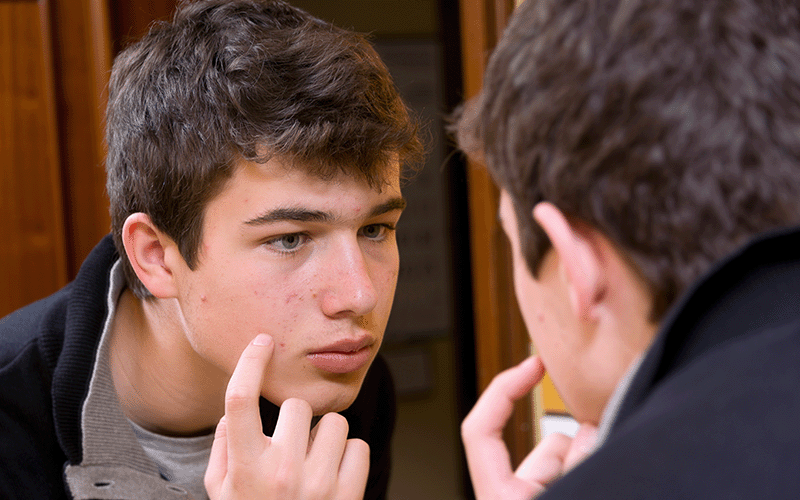The emotional pain of severe acne can continue long after the cysts and blemishes have cleared. Once the acne itself is gone, dark spots and scars are often left behind, causing anxiety and distress.
A scar is a natural part of the body’s healing process. When the skin’s collagen layers are injured — as can happen with long-term severe or inflammatory acne — a permanent scar is sometimes left behind. The severity of the scar depends on many factors including its location on the body, as well as your age, genetic makeup and ethnicity.
Acne scars can be unsightly and embarrassing, but for those who suffer from them, there is good news! There are several nonsurgical treatment options to reduce the appearance of scars and improve the overall appearance and feel of your skin.
Common Acne Scar Treatments
Though there is no magic cure to make acne scars completely disappear, there are some treatments that can dramatically change the size and appearance of scars. Some of the most popular treatments include:
Chemical Peels
Deep chemical peels penetrate the skin, removing the scarred skin cells so new healthy cells can replace them. There are also more superficial chemical peels available, which penetrate the skin’s pores so dead skin can be released. The result is better-looking skin and a smoother complexion overall.
Microdermabrasion
This popular treatment helps improve the skin’s appearance by using a fine crystal spray to break up dead skin and exfoliate and buff healthy skin.
Soft Tissue Fillers
Dermal fillers help decrease the indentions left from deep-pitted scars. Fillers are injected into the skin to replace lost volume, giving the skin a smoother, more even appearance. Injections are eventually absorbed back into the skin over time, so they must generally be repeated every few months.
Laser Skin Resurfacing
These laser therapies and skin resurfacing techniques work to remove scars, smooth the skin and generate the creation of new collagen to fill any indentions. The upper layer of skin is essentially vaporized, creating a wound that encourages the body to naturally create new collagen. Elastic fibers and collagen tighten as they heal, leaving skin feeling smooth.
Most treatments for acne scars are painless and can be performed in an hour or two in your dermatologist’s office with little or no downtime or discomfort. So which treatment is right for your scars? That depends on what type of acne scarring you have.
Types of Acne Scars
There are many different types of acne scars in all shapes, colors, and sizes, ranging from deep pits to light colored freckles. Each type requires a different treatment. There are three main types:
Depressed Scars
Also referred to as pitted scars, these are the most common type of acne scar. Depressed scars have a fibrous tissue base that attaches to the subcutaneous tissue. The result is a depression that doesn’t allow healthy tissue to regrow.
This type of scar can show up as broad “rolling” depressions with rounded edges, very deep and narrow “icepick” scars or “boxcar” scars with smaller depressions and very steep and defined edges.
Depressed scars tend to become more pronounced as the skin ages, and treatment typically involves removing the scar tissue to make room for new, healthy tissue to regrow.
Rolling scars respond well to laser resurfacing, chemical peels, microdermabrasion, microneedling, and some cosmetic fillers. Icepick scars are very deep and harder to treat but do respond to some laser therapies, as well as “punchout” excising procedures. Boxcar scars respond to laser resurfacing — though multiple treatments may be required to blend them into surrounding skin — and are also excellent candidates for various cosmetic fillers.
Raised Scars
Raised scars, also known as keloid scars, occur when excess scar tissue forms at the site of the injury and is raised relative to the surrounding healthy tissue. If a lot of excess scar tissue collects, the scar can appear as a large, rubbery keloid formation.
These dense, raised scars can be removed surgically or treated with laser resurfacing or microdermabrasion.
Discoloration
Sometimes, acne can damage the skin tissue and cause it to become discolored, creating what looks like dark freckles or spots. These discolored scars can typically be treated with laser treatments or even prescription strength topical retinoid creams.
Other times, scar tissue left behind from acne loses its ability to produce melanin, giving scars a light pink or white appearance. This type of scar is more noticeable on darker skin and can sometimes respond to laser resurfacing and chemical peels.
Erythema is another type of discoloration scar in which small capillaries in the skin are permanently dilated and appear as a clustered group of red dots. This type of scar responds well to prescription topical creams, as well as some laser and light-based treatments.
Looking to Visit a Dermatologist for Acne Scars?
To learn more about these and other breakthrough treatments for acne scars, contact U.S. Dermatology Partners today. We have multiple locations throughout the country, so fill out our simple online form to get in touch with us. One of our local team members will reach out to you shortly to answer your questions or schedule an appointment for you to visit us soon. Your skin and self-esteem will thank you for it.
Find a location near me
or

